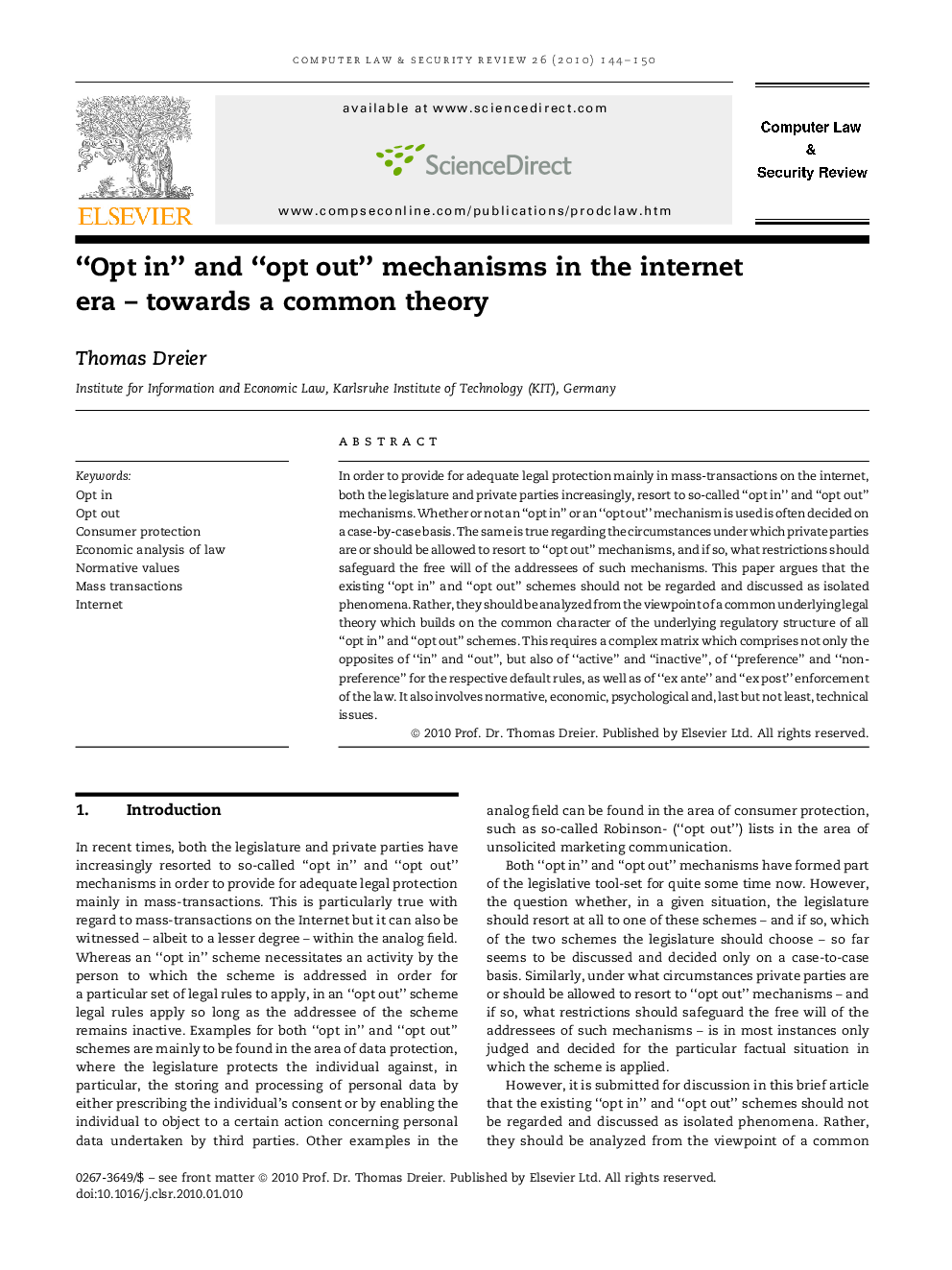| Article ID | Journal | Published Year | Pages | File Type |
|---|---|---|---|---|
| 467521 | Computer Law & Security Review | 2010 | 7 Pages |
In order to provide for adequate legal protection mainly in mass-transactions on the internet, both the legislature and private parties increasingly, resort to so-called “opt in” and “opt out” mechanisms. Whether or not an “opt in” or an “opt out” mechanism is used is often decided on a case-by-case basis. The same is true regarding the circumstances under which private parties are or should be allowed to resort to “opt out” mechanisms, and if so, what restrictions should safeguard the free will of the addressees of such mechanisms. This paper argues that the existing “opt in” and “opt out” schemes should not be regarded and discussed as isolated phenomena. Rather, they should be analyzed from the viewpoint of a common underlying legal theory which builds on the common character of the underlying regulatory structure of all “opt in” and “opt out” schemes. This requires a complex matrix which comprises not only the opposites of “in” and “out”, but also of “active” and “inactive”, of “preference” and “non-preference” for the respective default rules, as well as of “ex ante” and “ex post” enforcement of the law. It also involves normative, economic, psychological and, last but not least, technical issues.
